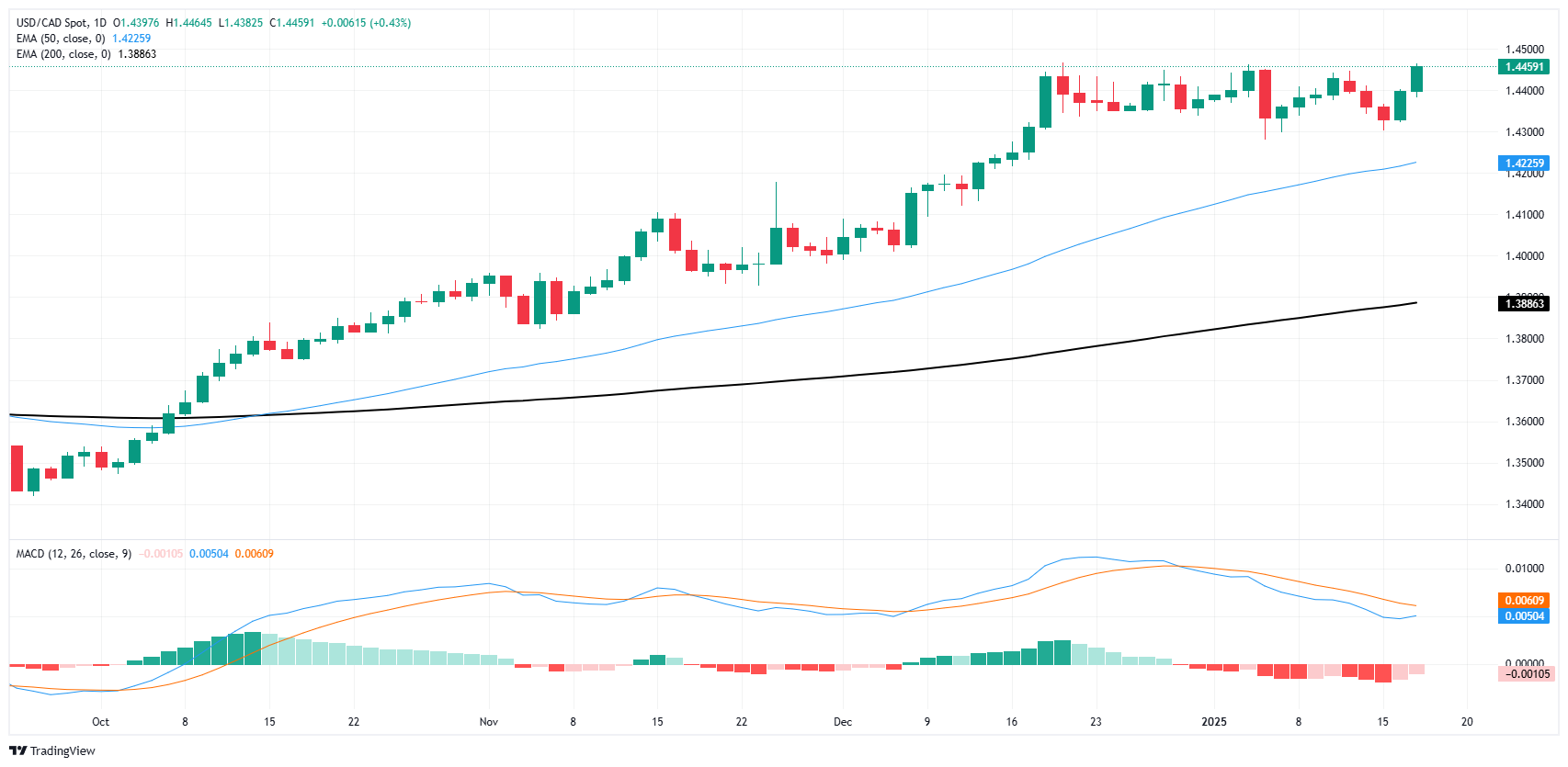Canadian Dollar slumps back into multi-year lows
- The Canadian Dollar shed another third of a percent against the Greenback.
- A lack of meaningful data from Canada is doing little to bolster the battered Loonie.
- Canadian CPI inflation due next week unlikely to spark much confidence.
The Canadian Dollar (CAD) slumped back into familiar multi-year lows on Friday, sending USD/CAD back above the 1.4400 handle and keeping the Loonie at its lowest bids since the pandemic era. The trading week is wrapping up with a thin data calendar, but hopes for future Federal Reserve (Fed) rate cuts are highlighting just how much the USD/CAD interest rate differential is set to widen.
Canada is slated to release its latest Consumer Price Index (CPI) index figures next Tuesday, and Canadian headline inflation figures are expected to slip further below the Bank of Canada’s (BoC) target. Which will only prompt further expectations of BoC rate cuts.
Daily digest market movers: CAD loses ground, tests long-term lows
- The Canadian Dollar fell nearly four-tenths of a percent against the Greenback on Friday.
- Excluding the pandemic, these are the CAD’s lowest bids against the USD since early 2016.
- No meaningful data on the economic calendar for Friday means the Loonie had to face broader market flows standing alone.
- Markets will open with choppy flows next week, with US markets dark for a holiday and incoming US President Donald Trump slated to be inaugurated, both on Monday.
- Canada’s headline CPI inflation measure for the year ended December is expected to decelerate further next Tuesday, forecast to decline to 1.7% from 1.9%.
Canadian Dollar price forecast
With the Loonie testing back into multi-year lows ahead of key inflation data that will surely confirm a widening interest rate differential, USD/CAD traders should be bracing for a fresh push into new highs on the chart as the Canadian Dollar falls further next week.
USD/CAD has been cycling in a near-term consolidation phase, but that sideways grind may be coming to an end next week, in either direction.
USD/CAD daily chart
Canadian Dollar FAQs
The key factors driving the Canadian Dollar (CAD) are the level of interest rates set by the Bank of Canada (BoC), the price of Oil, Canada’s largest export, the health of its economy, inflation and the Trade Balance, which is the difference between the value of Canada’s exports versus its imports. Other factors include market sentiment – whether investors are taking on more risky assets (risk-on) or seeking safe-havens (risk-off) – with risk-on being CAD-positive. As its largest trading partner, the health of the US economy is also a key factor influencing the Canadian Dollar.
The Bank of Canada (BoC) has a significant influence on the Canadian Dollar by setting the level of interest rates that banks can lend to one another. This influences the level of interest rates for everyone. The main goal of the BoC is to maintain inflation at 1-3% by adjusting interest rates up or down. Relatively higher interest rates tend to be positive for the CAD. The Bank of Canada can also use quantitative easing and tightening to influence credit conditions, with the former CAD-negative and the latter CAD-positive.
The price of Oil is a key factor impacting the value of the Canadian Dollar. Petroleum is Canada’s biggest export, so Oil price tends to have an immediate impact on the CAD value. Generally, if Oil price rises CAD also goes up, as aggregate demand for the currency increases. The opposite is the case if the price of Oil falls. Higher Oil prices also tend to result in a greater likelihood of a positive Trade Balance, which is also supportive of the CAD.
While inflation had always traditionally been thought of as a negative factor for a currency since it lowers the value of money, the opposite has actually been the case in modern times with the relaxation of cross-border capital controls. Higher inflation tends to lead central banks to put up interest rates which attracts more capital inflows from global investors seeking a lucrative place to keep their money. This increases demand for the local currency, which in Canada’s case is the Canadian Dollar.
Macroeconomic data releases gauge the health of the economy and can have an impact on the Canadian Dollar. Indicators such as GDP, Manufacturing and Services PMIs, employment, and consumer sentiment surveys can all influence the direction of the CAD. A strong economy is good for the Canadian Dollar. Not only does it attract more foreign investment but it may encourage the Bank of Canada to put up interest rates, leading to a stronger currency. If economic data is weak, however, the CAD is likely to fall.

